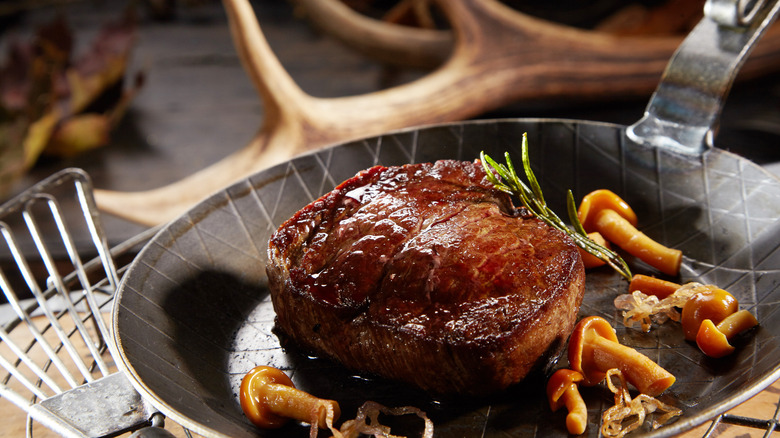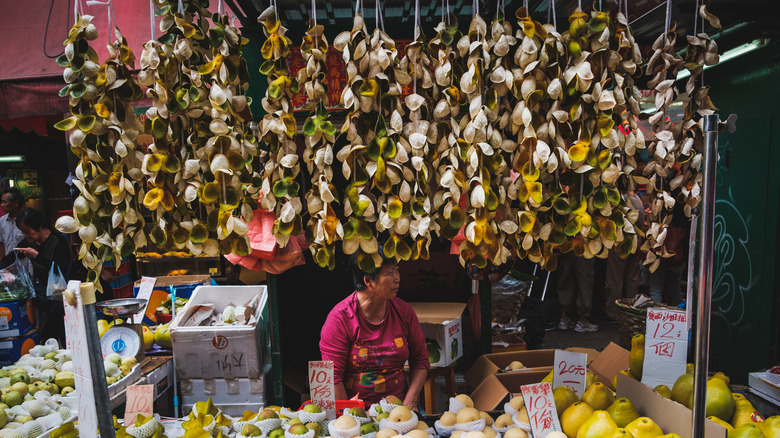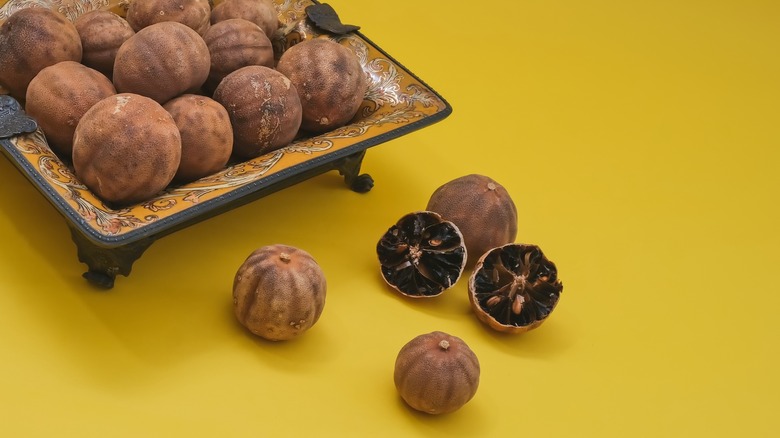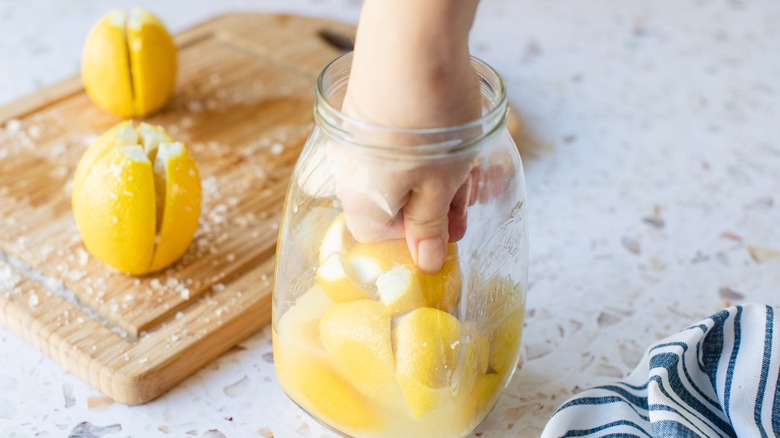The Unusual Ingredient That Takes The Bite Out Of Game Meat
There's a little white lie at the heart of the kitchen. Auguste Escoffier, the Victorian-era chef known as the founder of modern cuisine (via IWFS) had the motto "faites simple", which Elizabeth David translated, per The Independent, as an instruction to cook with "the avoidance of all unnecessary complication and elaboration". More recently, in his book "Kitchen Confidential," the late Anthony Bourdain said "Good food is very often, even most often, simple food." While this is true in many cases, the Italian attitude seems more honest. As The Green Truffle explains, Italian chefs tend to have an almost pathological commitment to high-quality, seasonal ingredients that allow simplicity to be an asset, rather than a drawback.
However, using minimal ingredients is a luxury many throughout history could not afford. When times are hard, avoiding waste is key — hence the wide range of seafood seen in fishermen's broths around the Mediterranean. People had to make do with bony remains nobody wanted to buy. It takes skill to make that taste good, and many of these more complicated dishes are now as iconic as the simple ones.
One unusual ingredient that has been used for millennia makes use of a plant part that's usually thrown out. It's used as medicine, to mask strongly flavored meats, and add fruity fragrance to out-of-season desserts. It's none other than the humble citrus peel.
History of citrus peel
The Northeast Indian state of Meghalaya is full of mountainous jungles where all sorts of plants and animals thrive. It's also known as the original home of citrus fruits, per Zizira. Local indigenous people's interaction with the wild and semi-wild citrus is a fascinating mirror that helps us better understand not only our modern relationship with oranges and lemons but the ways that humanity has interacted with sacred food trees since before written records began. According to an article published in the Indian Journal of Traditional Knowledge, citrus can soothe a variety of ailments and is a key ornament in some cultures' religious practices. It also has culinary uses, of course, and can specifically improve the flavor of meat-based dishes.
This multifaceted appreciation of citrus can also be seen in Chinese culture. Traditional Chinese Medicine uses citrus peel (typically dried) to treat nausea, coughs, and to strengthen the spleen, per Acupuncture Today. They've also been used in Chinese cooking since at least the 1300s, according to the Michelin Guide, which notes tangerine peels can reduce undesirable tastes such as gaminess in meat, or "muddy flavors" in fish. When it comes to Chinese New Year, the luck, prosperity, and status that citrus fruits represent mean they always get a "place of honor" on the New Year fruit plate, according to History.
Per a 2022 review from the Journal of Functional Foods, modern medical science also sees citrus peel as a valuable resource, especially for its antioxidant, anti-inflammatory, anti-cancer, and anti-diabetic properties.
Ways to cook with citrus peel
Citrus peel is typically preserved in some way, intensifying its flavors and prolonging its shelf life beyond the short season when fresh citrus is available.
In Chinese culture, mandarin peels are dried and aged for at least three years (and up to three decades) in order to improve the flavor, per The Hong Kong Cookery. These peels are used in many dishes, but are particularly essential in Chinese Black Chicken Soup to balance the gaminess of the meat.
In Persian cuisine, dried black limes reign supreme. Expect the typical sourness and bitterness, but with an earthy, smoky note, according to Fine Dining Lovers. Rare ingredient specialist Atef Boulaabi explained to Bon Appetit that Persian limes are sweeter, which balances out the bitterness. Boulaabi advocated using black limes with chicken — "I rub the meat with salt and [grated] black lime, and cook it over potatoes, tomatoes, and onions. It gets a very beautiful crust, and the smell is unbelievable!"
Salting is another way to preserve peels. Per The Guardian, preserved lemons are a traditional tagine ingredient from North African cuisine, but can add their floral zing to pasta, salsas, and fish dishes. Spice fans might enjoy the Japanese citrus condiment yuzu kosho. As Marion's Kitchen explains, this flavorful paste is made with chillies, citrus zest and juice, and salt. The FT called it "the ultimate flavor enhancer" — for those who can handle the heat.
Preserving your own citrus peels
Per Foodie Underground, making dried citrus peel is as simple as leaving them at room temperature for a few days, or in a 200°F oven for two to three hours. It is important to remove as much of the white pith as possible in order to reduce bitterness.
To make your own yuzu kosho, you'll need fresh yuzu, which can be hard to find outside of Japan. However, Semiserious Chefs was able to get a similar flavor profile by mixing several different citrus rinds together — orange, lemon, and grapefruit — and fermenting them with chili and salt for 3 weeks.
According to Taste of Maroc, preserving your own lemons for Moroccan food is even easier. Simply cut an 'X' shape into the lemon from top to bottom, so the lemon still holds together but is divided into four distinct wedges. Fill the crevices with salt and pack as many of them as you can fit tightly into a jar, squeezing and salting to reduce air gaps. After a few months they'll be ready to use, but the longer they are left, the mellower the flavor they'll have.
For a sweeter direction, The New Yorker suggests making citrus sugar using dried peels, sugar, and a pestle and mortar. Sprinkle it onto baked goods or yogurt for a sweet, tangy lift.



